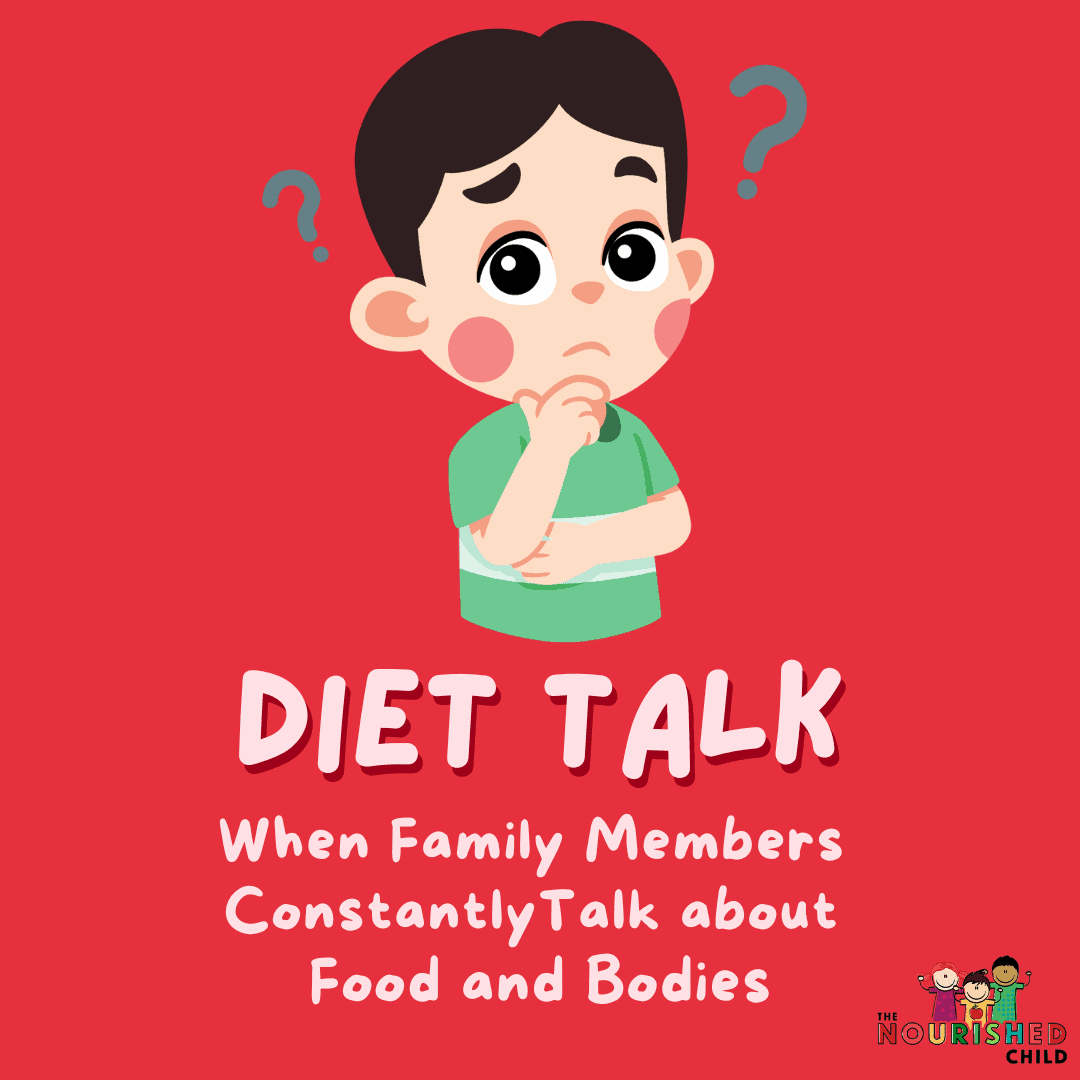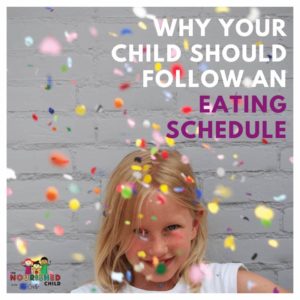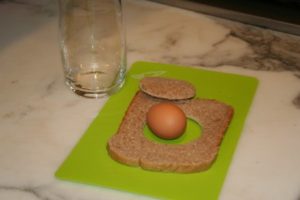Meal and Snack Schedule: 4 Reasons Why It Helps Kids Eat Better
August 23, 2023
Routines, routines, routines! Here are four good reasons why a meal and snack schedule works for kids.
As a mom of four grown kids and a pediatric dietitian, I know that mealtime can feel unpredictable, frustrating, and exhausting. Especially if you don’t have a consistent routine.
And when things are inconsistent or chaotic, your child can feel anxious and focus too much on food, leading to unhealthy eating behaviors.
A Meal and Snack Schedule Will Help Your Child Eat Better
Let me help you make your life easier!
When it comes to feeding your family, one of the simplest things you can do is implement a daily meal and snack routine for your family.
In fact, here are 4 good reasons why it works.
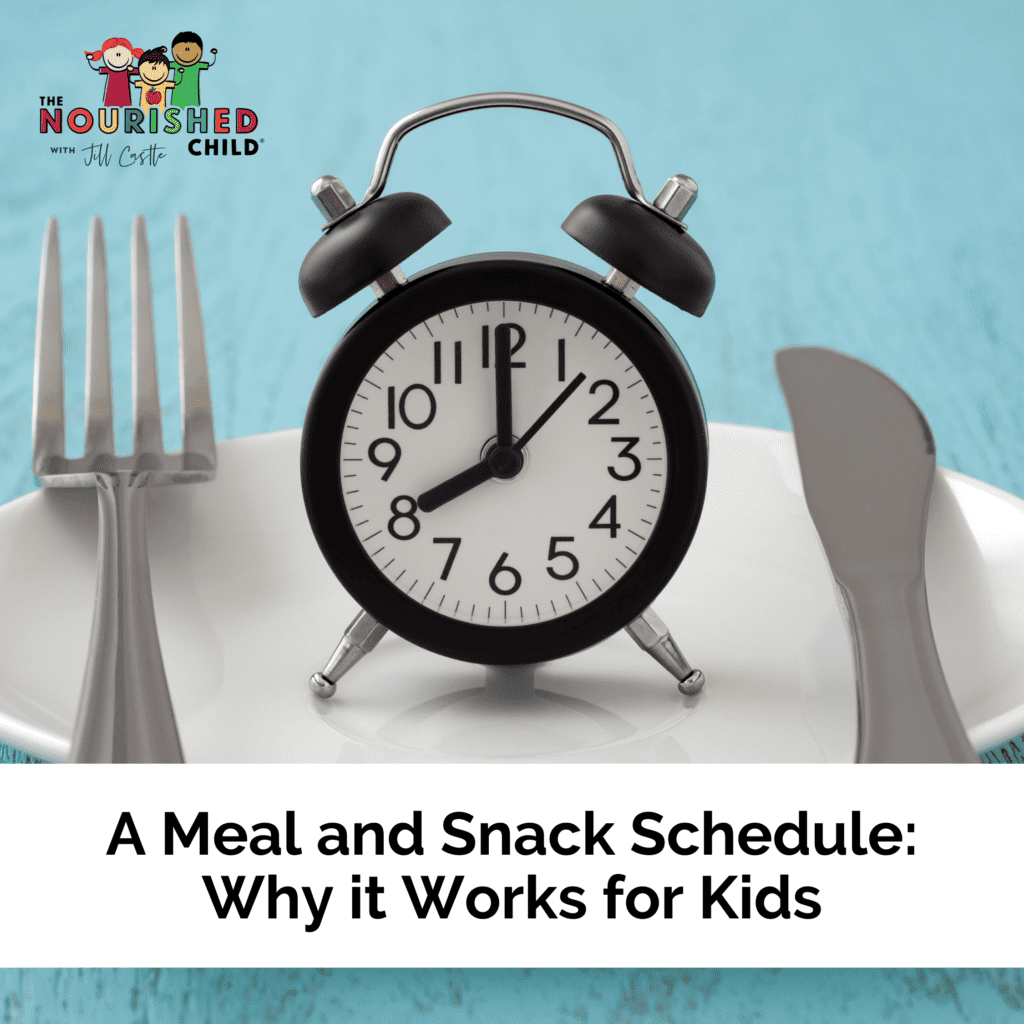
Routine meals and snacks build better appetite regulation
Children eat. They get full. They stop eating. Then after a few hours, they get hungry again.
Sometimes it feels like they’re hungry all the time!
But when meals and snacks happen at regular times, children are better able to listen to their bodies and sense their hunger and fullness.
Translated: not only do they eat when they’re hungry, but they stop when they’re full.
Physiologically, your child’s tummy fills up with food when they eat. Certain nutrients in food, like protein, fat, and fiber slow digestion, resulting in a feeling of fullness for a longer period of time.
Simply said, certain types of food make your child stay full longer, delaying the time before they get hungry again.
So, when meals occur in a timely manner, you’re setting up your child’s appetite cycle to be more rhythmic.
And you’re increasing the chances that your child is hungry at meal and snack times, and satisfied in between.
Here are the recommended intervals for meals and snacks, based on age:
- Toddlers: Every 2.5 to 3 hours
- Children: Every 3 to 4 hours
- Teens: Every 4 to 5 hours
Here’s an example of an eating schedule for a school-age child:
7:00 am: Breakfast
10:00 am: Snack
1:00 pm: Lunch
3:30 pm: Snack
6:00 pm: Dinner
Regular meals and snacks reduce extra eating
When children are allowed to graze or eat whenever they feel like it, including when they’re bored, the risk of overeating is high.
As a result, they’re more likely to lose the connection to their appetite cues.
They don’t actually get hungry because they’re eating too frequently.
One way to deal with this is to set limits on access to food, such as where food is eaten and when it’s eaten.
These boundaries can prevent children from overeating, filling up on snacks, and losing the connection to their sense of appetite.
Boundaries support and reinforce the meal and snack schedule.
Examples of a boundary:
- The kitchen is closed between meals and snacks. Translated: No eating between meals or extra snacking.
- We only eat in the kitchen.
- Ask an adult before taking food. Translated: The adults are in charge.
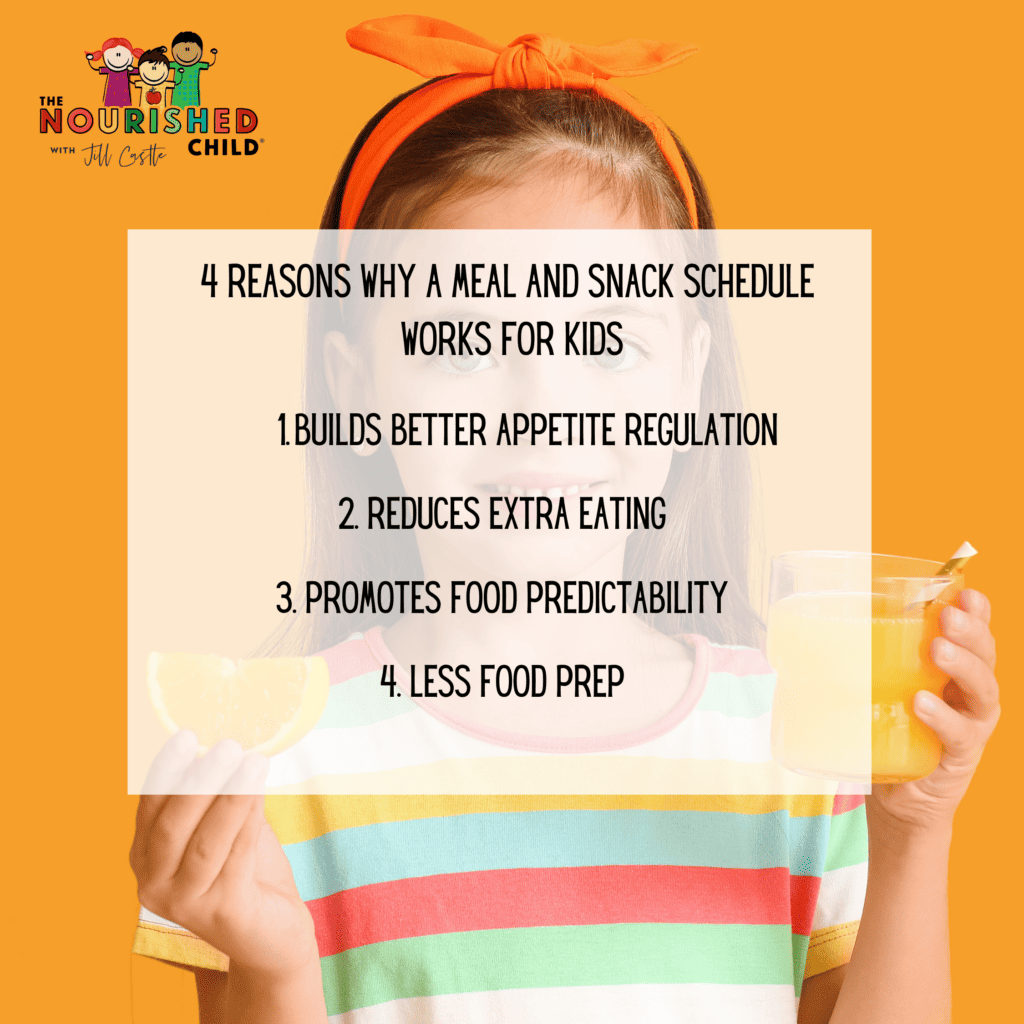
A meal and snack schedule promotes food predictability
Children thrive with predictability.
Just look at regular bedtimes, wake times, or the school day schedule. These are routine for most kids, helping them stay calm, trust the system, and cooperate.
The same is true for consistent meals and snacks.
They ease the feelings of insecurity, reduce constant questions about food, and help deter other unhealthy behaviors like sneaking food.
A meal and snack schedule means less food prep ( a win for you!)
Most children will eat 4 to 6 times a day. This translates to three meals and 1-3 snacks each day, depending on your child’s age (see above).
If you don’t have meals and snacks happening at regular times, you may be preparing food around the clock!
When the meal and snack schedule is unstructured, it’s likely two things are happening:
- you’re making more food than you need to (usually snacks)
- catering to your child’s food preferences (or, short-order cooking)
Parenting food this way can lead to too much snacking and eating, and limiting your child’s nutritional intake due to repetitive foods.
Although the effort to schedule consistent meals and snacks may feel like work, in the long run, a meal and snack schedule makes your life easier while helping your child tune in to their appetite, avoid extra eating, and be calmer about food.
More Resources for Helping Kids Eat Better
The Smart Mom’s Guide to Healthy Snacking – a book to help parents raise Smart Snackers.
Try New Food – a book to help parents introduce a variety of new foods to their children, even if they’re picky!
Eat in Peace – A workshop to help you bring more calm and happiness to mealtime.


